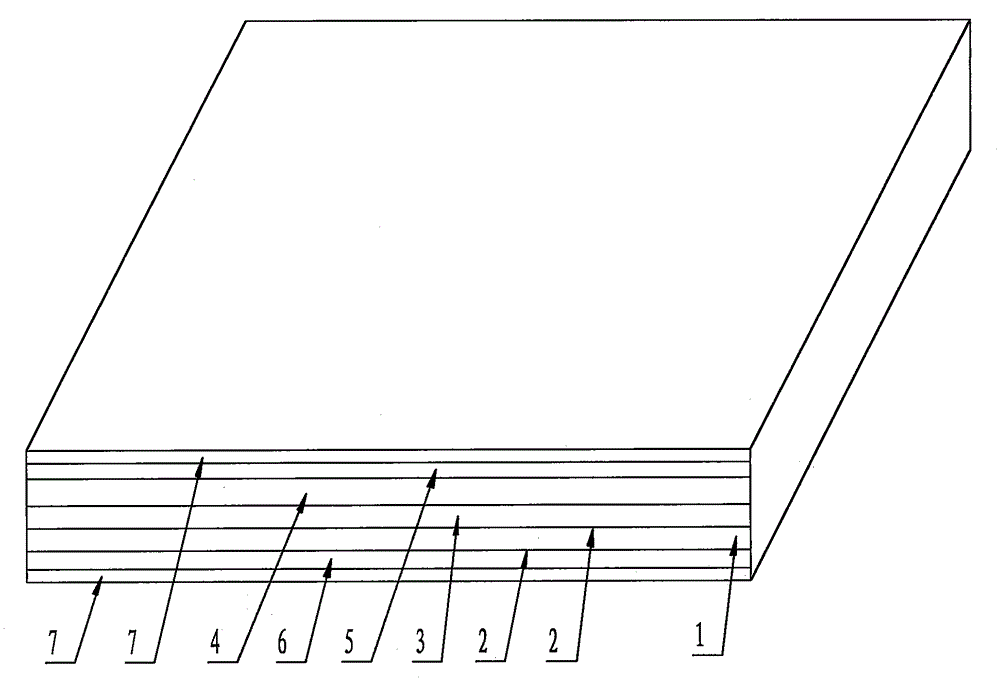Processing method for single-sided shadow eliminating conductive glass of touch screen
A technology of conductive glass and processing method, which is applied in the processing field of conductive glass for single-sided shadow-elimination touch screen, which can solve the problems of viewing pattern influence, electromagnetic shielding, electrostatic protection function, etc., and achieve high uniformity, good electromagnetic shielding, and low cost Effect
- Summary
- Abstract
- Description
- Claims
- Application Information
AI Technical Summary
Problems solved by technology
Method used
Image
Examples
Embodiment 1
[0027] Both surfaces of the glass substrate 1 are tin surfaces 2, and an interference layer 1 3 is arranged above the tin surface 2 on the upper surface of the glass substrate 1, and a transparent passivation layer 4 is arranged between the interference layer 1 3 and the interference layer 2 5, and the interference layer 2. An ITO film 7 is provided above the glass substrate 1, a transparent layer 6 is provided below the tin surface 2 on the lower surface of the glass substrate 1, and an ITO film 7 is provided below the transparent layer 6;
[0028] The transparent passivation layer 4 adopts transparent silicon dioxide or transparent silicon oxynitride;
[0029] The first interference layer 3 and the second interference layer 5 both use niobium pentoxide.
Embodiment 2
[0031] In the first step, the glass substrate 1 is processed,
[0032] A. Cutting the glass substrate 1, first X cutting, then Y cutting, and then breaking into pieces;
[0033] B. Carry out edging and chamfering to the cut glass substrate 1, first X edging, then chamfering, rotate 90° and then Y edging and chamfering;
[0034] C. Scrub and dry;
[0035] D, polishing the glass substrate 1 after edge grinding and chamfering;
[0036] E, then brush and dry;
[0037] In the second step, the first interference layer 3, the transparent passivation layer 4, the second interference layer 5 and the transparent layer 6 are sputtered on the glass substrate 1;
[0038] A. Heating the glass substrate 1 after polishing, scrubbing and drying; the heating temperature used is 150-280 degrees Celsius;
[0039] B. Using magnetron sputtering vacuum coating equipment to sputter an interference layer-3 above the tin surface 2 on the upper surface of the heated glass substrate 1, and sputter a ...
PUM
 Login to View More
Login to View More Abstract
Description
Claims
Application Information
 Login to View More
Login to View More - R&D
- Intellectual Property
- Life Sciences
- Materials
- Tech Scout
- Unparalleled Data Quality
- Higher Quality Content
- 60% Fewer Hallucinations
Browse by: Latest US Patents, China's latest patents, Technical Efficacy Thesaurus, Application Domain, Technology Topic, Popular Technical Reports.
© 2025 PatSnap. All rights reserved.Legal|Privacy policy|Modern Slavery Act Transparency Statement|Sitemap|About US| Contact US: help@patsnap.com

